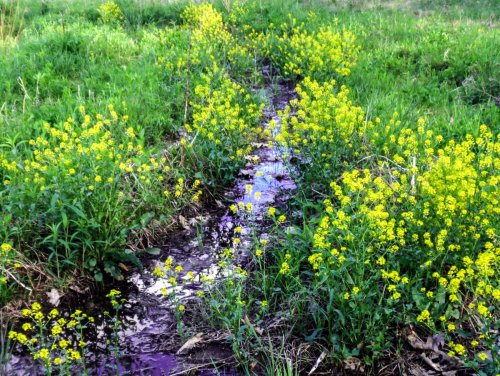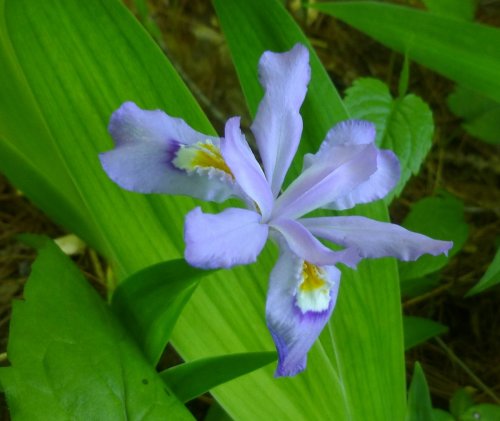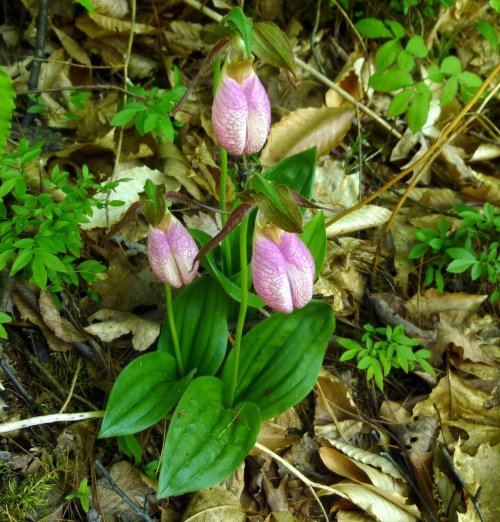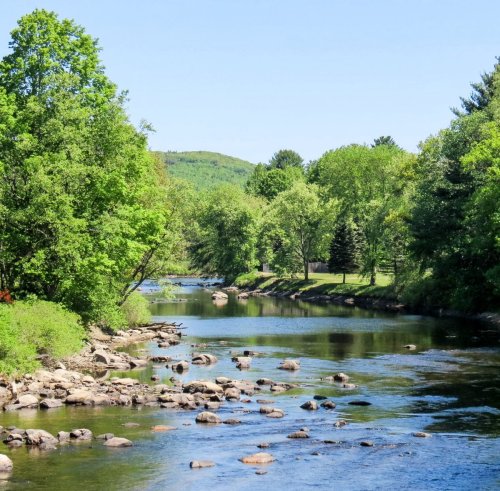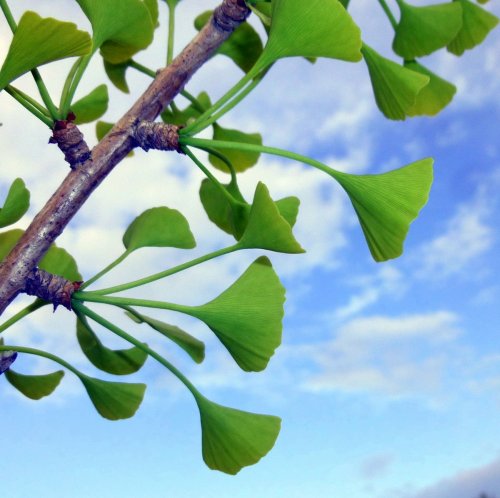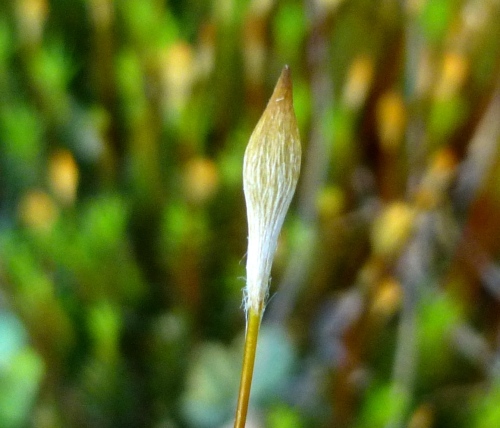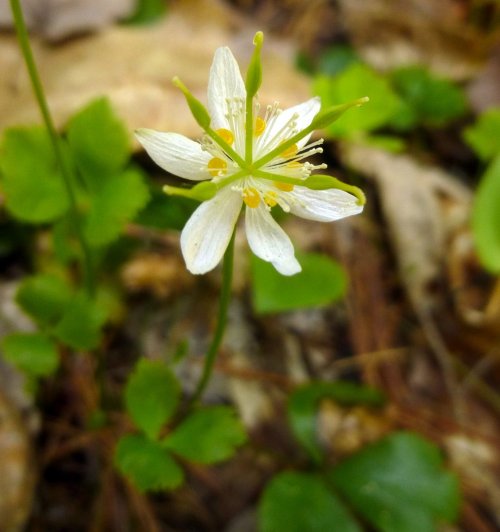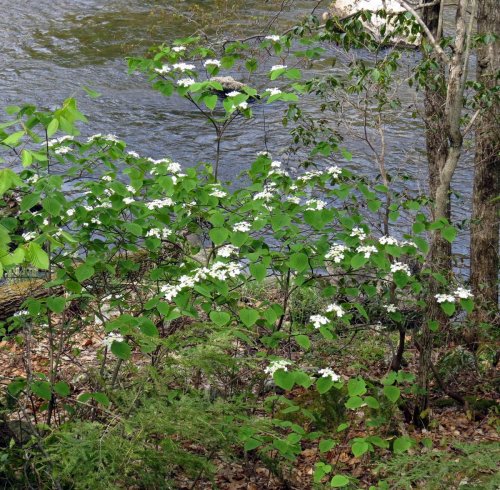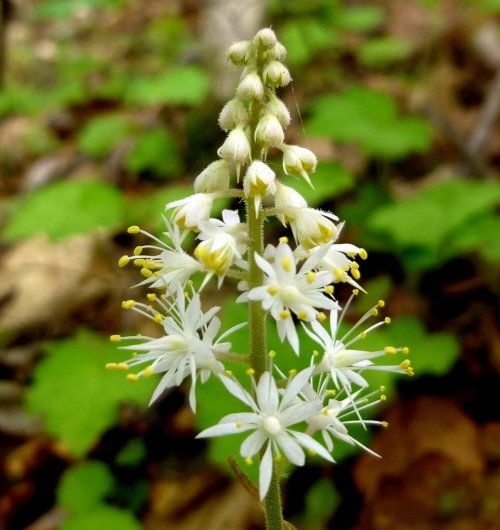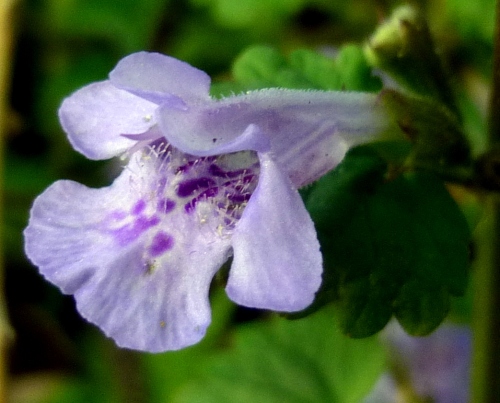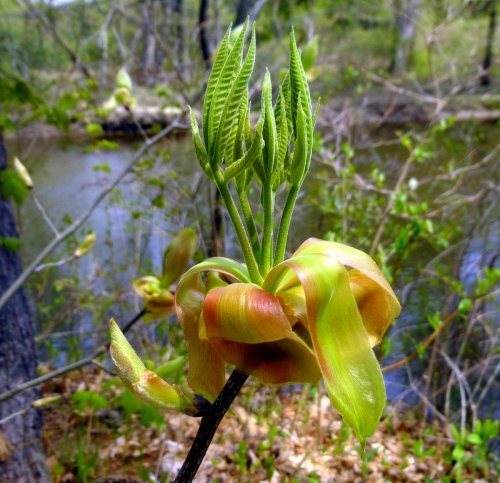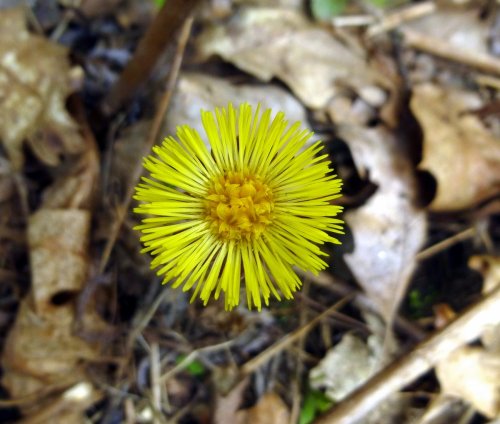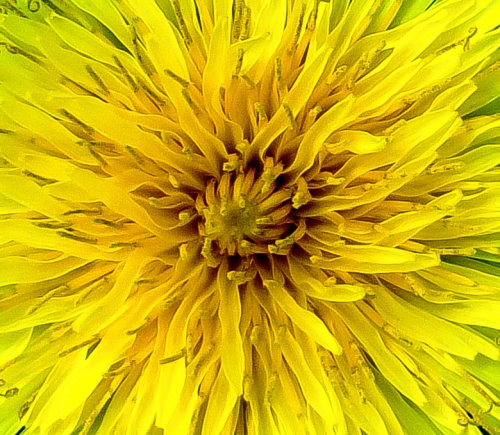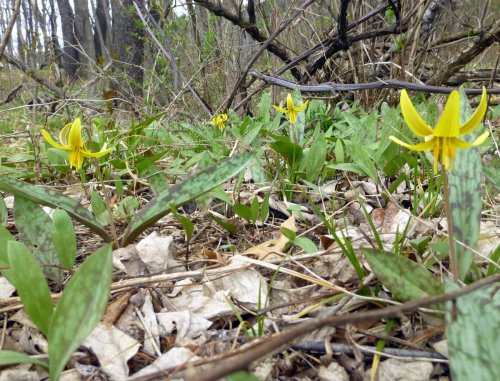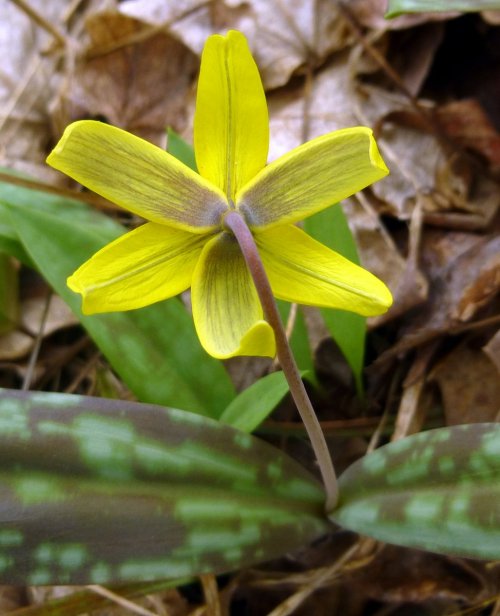I’m starting off this post with water because there seems to be less and less of it to see each day as the drought goes on. Actually this is a “seep” which usually runs all year long and which hasn’t dried up yet. A seep is a place where water slowly oozes out of the ground and that describes this place perfectly. I thought the yellow of the common wintercress was beautiful against the blue of the water.
Common wintercress (Barbarea vulgaris) is also called yellow rocket and is in the mustard family. It is a biennial plant, meaning it forms leaves during its first year and flowers and then dies after its second year. The first year basal leaves are hardly noticeable but when it blooms you can’t help but see the bright yellow, foot tall plants. It is a native of Europe and Asia and, as the all too familiar story goes, it almost immediately escaped cultivation here and is now found on disturbed ground mostly is waste areas, so it is not that invasive.
I think I would have named blue eyed grass yellow eyed grass, but that’s just me. No matter what it’s called, blue eyed grass (Sisyrinchium angustifolium) has always been one of my favorite wildflowers. It’s in the iris family and isn’t a grass at all, but might have come by the name because of the way its light green leaves resemble grass leaves. The flowers are often not much bigger than a common aspirin but their color and clumping habit makes them fairly easy to find. Native Americans had several medicinal uses for this plant.
To me the ox eye daisy (Leucanthemum vulgare) says that June has come but this year the warmth of May has brought them on a little early. This is a much loved flower so it is easy to forget that it was originally introduced from Europe as an ornamental in the 1800s. It quickly escaped cultivation and has now spread to each of the lower 48 states and most of Canada. Since cattle won’t eat it, it can spread at will through pastures and that means that it is not well loved by ranchers. A vigorous daisy can produce 26,000 seeds per plant and tests have shown that 82% of the buried seeds remained viable after six years underground.
Bunchberry (Cornus canadensis) always looks like it has chubby cheeks to me but I can’t explain exactly why. It also always reminds me of dogwood and that’s because it is in the dogwood (cornus) family. It is also called creeping dogwood and bunchberry dogwood. The large (relatively) white bracts surround the actual flowers, which are greenish and very small. The entire flower cluster with bracts and all is often no bigger than an inch and a half across. Later on the flowers will become a bunch of bright red berries. Native Americans used the berries as food and made a tea from the ground root to treat colic in infants. The Cree tribe called the berry “kawiskowimin,” meaning “itchy chin berry” because rubbing the berries against your skin can cause a reaction that will make you itch.
Bunchberry plants grow right up into the V made by the two trunks of this oak tree near my house. Bunchberry is often found growing on and through tree trunks, stumps, and fallen logs but exactly why isn’t fully understood. It’s thought that it must get nutrients from the decaying wood, and because of its association with wood it’s a very difficult plant to establish in a garden. Native plants that are dug up will soon die off unless the natural growing conditions can be accurately reproduced, so it’s best to just admire it and let it be.
Here’s a dogwood blossom to compare to the bunchberry we saw previously. It has the same 4 larger white bracts with small greenish flowers in the center. Even the leaves show the same veining.
I’m not positive what this irises name is but I found it growing along a path in the woods. I think it might be a dwarf crested Iris (Iris cristada) that has escaped from someone’s garden. It stood only about 6 inches tall. It was very pretty and also unexpected.
On May 17, 1854 Henry David Thoreau wrote “The splendid Rhodora now sets the swamps on fire with its masses of rich color,” and that is exactly what this beautiful little plant does. I was kneeling when I took this photo, so though these shrubs look quite tall they really top out at no more than 2 feet. There are actually 2 shrubs in this photo; one is the rhodora (Rhododendron canadense,) and the other is bog laurel (Kalmia polifolia). Both normally grow in standing water and seem to be doing exceptionally well this year in spite of the drought that has left them with dry feet.
Rhodora (Rhododendron canadense,) is a small, native rhododendron (actually an azalea) that loves swampy places. It is native to the northeastern U.S. and Canada and both its western and southern limits are reached in Pennsylvania. The flowers appear before the leaves, but only for a short time in spring. By mid-June they will have all vanished. Rhododendron canadense was first described and pictured by Henri Louis Duhamel du Monceau in the ‘Botanic Garden’ in Paris in March 1756, where it had been brought from Canada. It was a big hit and was introduced to England in 1791. This beautiful little shrub will take all the cold it can get but it has a hard time in hot, dry weather.
Bog laurel is another very beautiful native shrub but it is on the rare side and I don’t see it that often. The small, dime size flowers are bright pink and very beautiful. Like many laurels bog laurel is poisonous enough to kill and no part of the plant should ever be eaten. Legend has it that when a Native American wanted to end his life, this was the plant that was chosen to do the deed. It likes to grow along the edges of cool acidic bogs and often grows in shallow standing water. That makes it harder to get close to and in this case, that might be a good thing.
Mayapple flowers (Podophyllum peltatum) are hard to get a decent photo of because they nod toward the ground under the plant’s leaves. I’ve read that once a mayapple produces flowers and fruit it reduces its chances of doing so in following years. Native Americans boiled the root and used the water to cure stomach aches but this is another native plant that is toxic and should not be eaten. Two anti-cancer treatment drugs, etoposide and teniposide, are made from the Mayapple plant.
At a glance it might be easy to confuse the large oval leaves of blue bead lilies (Clintonia borealis) with those of lady’s slippers, but once the flowers appear there is no doubt. I saw a lot of plants with leaves but no flowers in this spot. It takes more than 12 years for new plants to produce flowers, so they must all be younger than that. Their cheery yellow flowers really light up the shaded forest floor and I’m always happy to find them.
A close look at the flower shows why blue bead lily is in the lily family; each one looks like a miniature garden lily. The flowers give way to a single electric blue berry, which is toxic. One Native American legend says that, when a grass snake eats a poisonous toad, it slithers in rapid circles around a shoot of blue-bead lily to transfer the poison to the plant. Blue bead lily seeds take 2 years or more to germinate and then another 10 to bloom, so growing this plant from seed would take great patience.
Our native pink lady slipper orchids (Cypripedium acaule) seem to be thriving this year in spite of the dryness, and that surprises me. For centuries this plant has also been known as the moccasin flower, possibly because the Native American Ojibway tribe called it ma-ki-sin-waa-big-waan. Another name is whippoorwill shoes, because an old native legend says that when whippoorwills go courting at night, they wear lady’s slippers as moccasins. This pouch or “moccasin” has a purpose; once a bee gets inside the pouch it has to force its way out and the plant deposits a nice load of pollen on its head when it does. The problem with this strategy is the bees aren’t apt to fall for having to force their way out of the pouch twice because it uses up their energy, so a lot of pollen is wasted. One study in Pennsylvania showed that of 3,300 lady’s slippers only 23 were pollinated.
Though the flowers of the lady’s slippers in the previous photo were light colored these were quite dark. Normally that wouldn’t be unusual except that the two groups were growing side by side. Things like that interest me and I always wonder what causes the differences that I see.
This photo is for all of you who have never seen a lady’s slipper blossom up close. They’re very beautiful things and people will gladly drive and / or walk miles to see them at this time of year. That makes me feel very grateful to have a few volunteers growing right here in my own yard.
For 99 percent of the time we’ve been on Earth we were hunters and gatherers, our lives dependent on knowing the fine, small details of our world. Deep inside, we still have a longing to be reconnected with the nature that shaped our imagination, our language, our song and dance, our sense of the divine. ~Janine M. Benyus
Thanks for stopping in.
